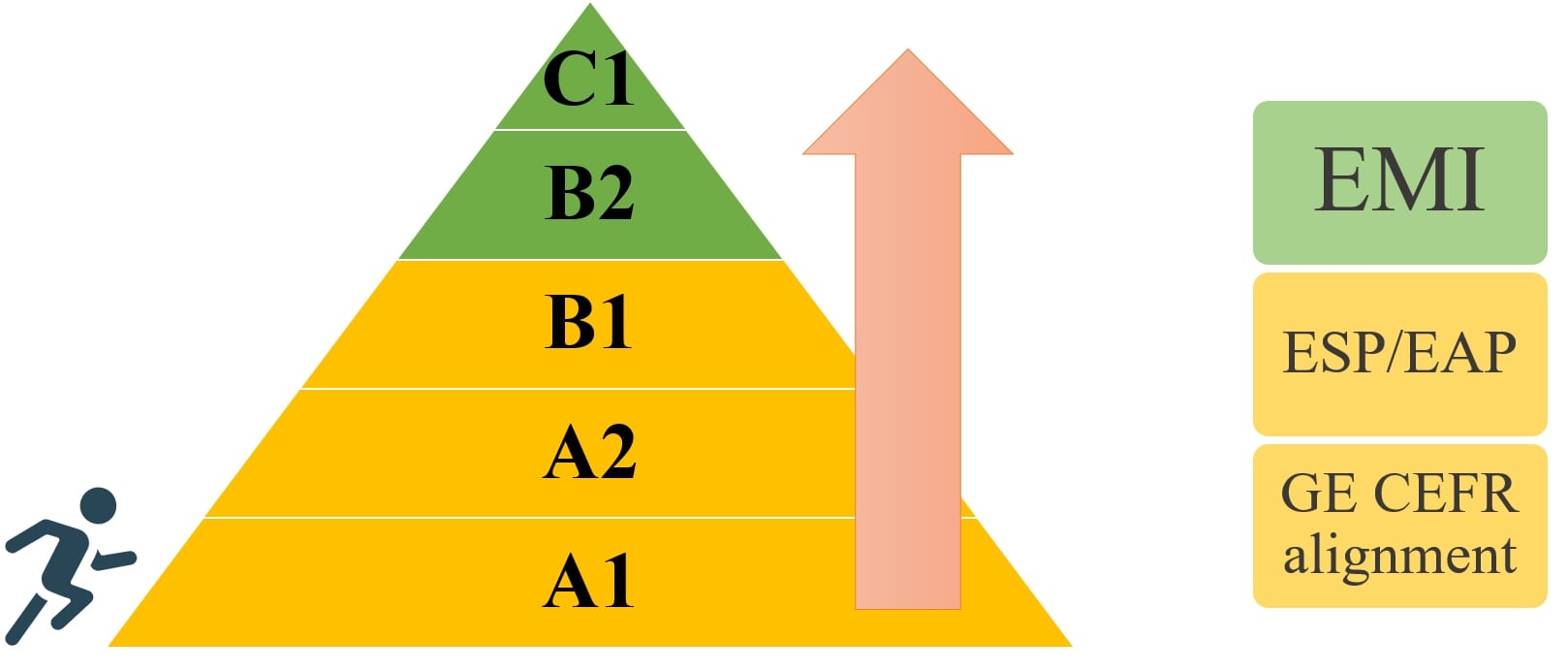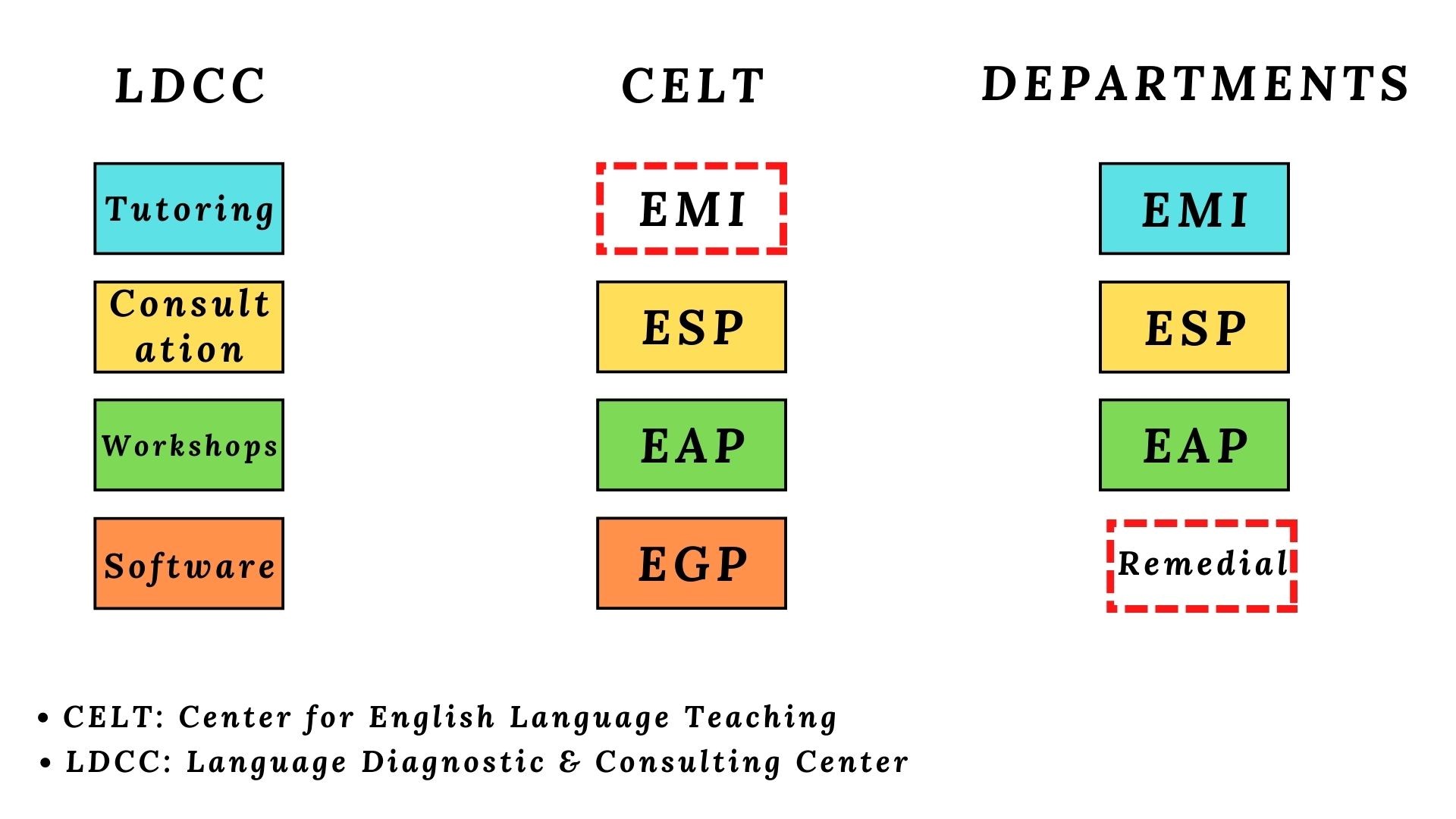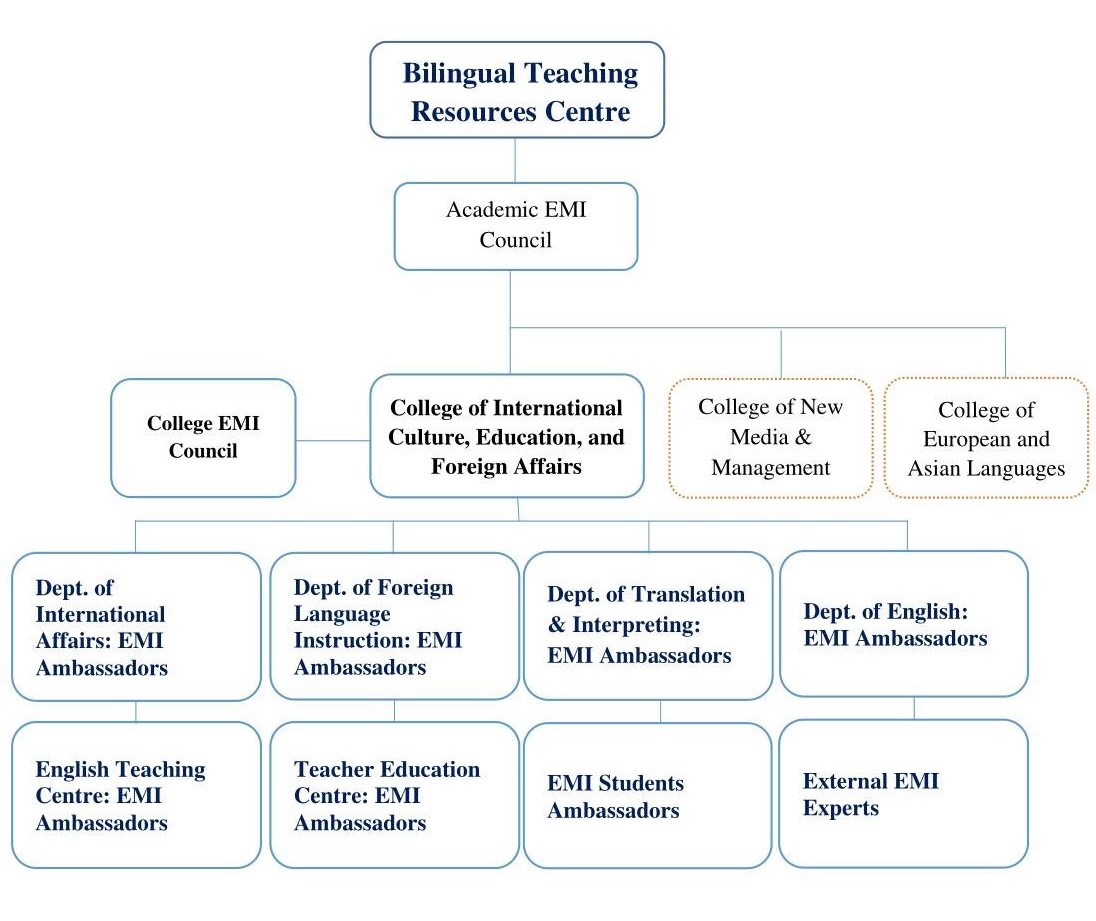分類清單
計畫摘要
為強化本院轉型為語言之國際應用目標,擬從「英語暨國際學院」更名為「國際文教暨涉外事務學院」,為本校英語暨國際教育之2.0版,以英語之「國際應用」為主軸,不僅跳脫基本英語教學,同時預設各項專業(文教事業、國際事務、談判、培訓認證等)與英語結合之發展方向,且主動開啟並挑戰國際市場與政治經貿,實為英語教育之進階版。其四大策略為: (1)深化師生英語說寫能力; (2)以ESP/EAP輔助EMI; (3)強化EMI為常態; (4)建立校園英語化環境。
奠基在文藻55年來雄厚的外語底蘊,本學院將精進、淬鍊、導入所有師生及校友的語言人才庫,以涉外事務的能量與鮮明願景,為雙語國家提供最好的全英語師資培訓、開拓國際文教版圖,同時也將與透過國際商務談判人才的培育,協助國家打響臺灣的國際知名度與能見度。

(圖一 使命與策略)

(圖二 推動架構以學生英語能力為標準)

(圖三 EMI課程地圖 一般選修)
As an international Catholic University, Wenzao embodies the educational philosophy of the Roman Union of the Order of St. Ursula. It has been Wenzao’s heritage and mission to use English as a medium of instruction since the University was founded as a language college in 1966. In transforming from a language college into an international university, the College has broadened its scope to develop its focus on culture, education, and foreign affairs. This strategy will leverage our resources in order to be in line with our bilingual capacity to meet Taiwan’s Bilingual Policy by 2030. Furthermore, the increased international diplomatic and trading activities lead to a strong demand on talents of international affairs from the public and private sectors.
The College aims to produce global scholars and professionals for foreign language (especially English) instruction, diplomatic service (including translation), and international business careers. At the bachelor level, we educate students in foreign affairs, cross-cultural communication, and international education. At the master level, we devote our effort to train foreign affairs professionals, business professionals, and international educators in English. Thus, our College intends to integrate subject material and knowledge from different professional areas with bilingual language competency. The significance of EMI is not as a concept or a one-time project, but an ongoing goal and teaching method.
Grounded in the spirit of an International Catholic University, our College reflects the University’s core values and follows the University’s 5-year plans to “develop cross-disciplinary and innovative educational institution” (item 2) and to “create an international network of global mobility” (item 4). Furthermore, we sustain our educational belief with the devotion to the UN’s Sustainable Development Goals (SDGs) goal 4 which targets quality education, and concentrate on the phased practical mechanism and strategies to promote bilingualism. We have translated bilingual missions into process-oriented and competency-oriented learning models. It is our hope that our approach to promote bilingualism can lead Taiwan to become a bilingual society.
To support the national initiatives on bilingual education and make our College more competitive in the future, we will restructure our College. We will further internationalize the curricula and attract global scholars/teachers and international students, specifically in the areas of foreign affairs and international education.
During the 108 academic year (year 2019-2020), 1,416 undergraduates, 553 junior college students, and 74 master candidates, as a total of 2,035 students enrolled in our day programmes. A total of 134 foreign students study in our College (excluding those from Hong Kong and China), which indicates the College has the largest population of international students compared to other colleges in Wenzao.
While restructuring in 2021, most of the academic departments and programmes remain the same without noticeable differences. The Department of Foreign Language Instruction will be joining our College as it fosters our transformation and leverages resources in education. The existing academic programmes, including Department of International Affairs, Department of Translation and Interpreting, and Department of English. Department of International Affairs promotes students’ international mobility and extends their international perspectives. Department of English trains fundamental English skills with cross-cultural communication, management, and negotiation. Dept. of translation and interpreting will upgrade the literacy of bilingualism into a full-scope training.

(Figure 1 Goals and Strategies)

(Figure 2 Types of language supports provided by different units)

(Figure 3 Organization Structure)





